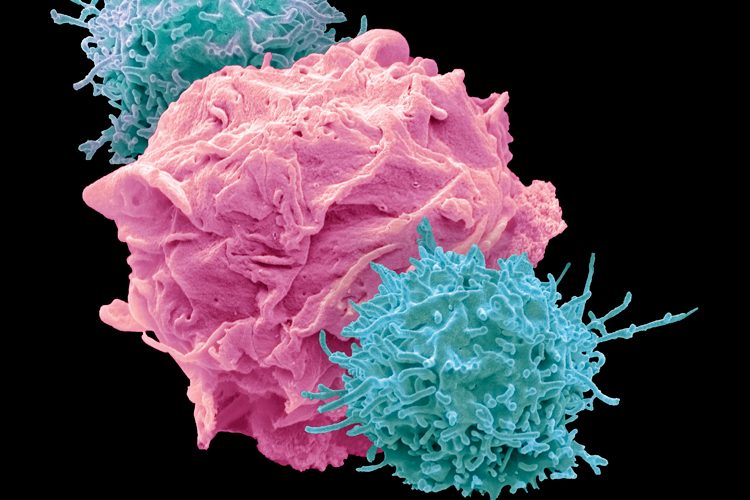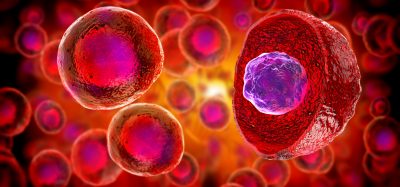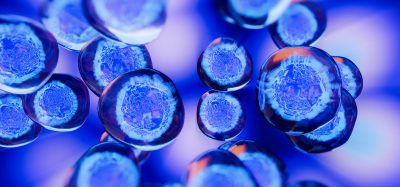Advancing regenerative cell therapy development
Posted: 4 January 2024 | Taylor Mixides (Drug Target Review) | No comments yet
In this interview we discuss with Alder Therapeutics regenerative cell therapy development through a proactive strategy, addressing manufacturing challenges early and ensuring a streamlined process. We explore an approach in pluripotent stem cell therapy development which eliminates complexities, minimises costs and expedites the delivery of transformative therapies.

What distinguishes Alder Therapeutics’ approach to regenerative cell therapy development from traditional methods, and how does it aim to reduce risks in the preclinical phase?
Traditional approaches to regenerative cell therapy development are defined by several challenges. First, getting from the starting material to the end therapeutic product is often long and slow, as well as tricky to do consistently and repeatedly. This is in part due to a complex manufacturing process, which is harder to control than those used for other modalities (such as small molecules and monoclonal antibodies). As the cell therapy sector is still quite new, it simply doesn’t have the mature technologies and standardised approaches available to ease the production of these therapies yet. This complexity can then impact the commercial viability of the products, since the cost of goods sold (COGs) can be high relative to the reimbursement price.
Companies sometimes do not consider and address the manufacturing challenges, and therefore the commercial viability of their product, early enough in development and will instead press ahead thinking the manufacturing issues will be solved later.
Our approach, however, is to identify and address these risks and assess commercial viability as early as possible in development — well before the clinic. So, at the preclinical stage in a program, we’ve already identified and ranked risks relating to the manufacturing, quality, and non-clinical functions, and defined areas of priority for development to address those risks with high criticality and impacts in the clinical program. We also draft manufacturing processes that are phase appropriate, using current bioprocessing and analytical technologies to estimate lot sizes and throughput, cost of goods and cost per dose at commercialisation stage.
We don’t simply hope for a future solution to make our approach viable. By this point, we have undertaken a thorough analysis of what the market will look like at the anticipated product launch, including potential reimbursement models. In summary, with our approach, we de-risk many of the potential pitfalls in the preclinical stage, and that sets us up for greater chances of success down the line.
How, in more detail, does Alder Therapeutics plan to address the many challenges associated with manufacturing processes in pluripotent stem cell therapy development?
Our approach to every aspect of stem cell therapy development is to anticipate challenges and address them as early as possible. For manufacturing, it’s no different. For example, we meticulously scrutinise every step and reagent in our manufacturing processes, categorise them based on their risk level, and then minimize that risk as much as possible. If the risk is a potential reagent supply issue that could cause costly delays, for instance, then we build out a bank of alternative suppliers for redundancy.
Many cell therapy manufacturing processes also rely on animal-derived ingredients, which can lead to inconsistency and safety concerns, as well as greater regulatory burden. But we eliminate animal-derived ingredients from our manufacturing processes, meaning we can sidestep these potential difficulties and unlock greater speed and cost-efficiency. We also ensure that the manufacturing process is successfully transferred from an academic setting to an industrial setting such as CMO or CDMO early, meaning that scale-up feasibility questions are already resolved upfront.
What’s more, where suitable for the indication and dose regime of our Photoreceptor Progenitor Cell Product ALD01, we use a simple 2D manufacturing approach that can be fully automated, while many others will rely on processes with spheroid or organoid manufacturing steps that demand manual handling and processing. These can complicate and extend the process — making it 3–5x longer than with our 2D approaches. Accordingly, we can drastically improve the speed of manufacturing, which means, when the time comes, we can minimise the time spent in expensive cleanroom and GMP facilities to reduce the COGs.
The result is that we have a streamlined and scalable manufacturing process that maximizes speed, minimises costs, and ultimately, enhances our ability to deliver life-changing therapies to as many patients as possible, as efficiently as possible.
Alder Therapeutics has two promising cell therapy programs in the pipeline. Tell us about them. What is the unique value proposition for such approaches in the treatment of the target indications?
The highly promising programs we have in the pipeline are for two diseases with unmet medical need — Retinitis Pigmentosa (RP) and chronic heart disease. We’ve just completed preclinical studies for both and have some fantastic results. Of course, we’re progressing both programs in line with our novel development approach, which helps ensure a reduced-risk and commercially viable program from the get-go.
So, what makes these therapies unique? Well, unfortunately, most available treatments for degenerative eye conditions and chronic heart disease treat only the symptoms. They do little, if anything, to resolve or correct the underlying pathology. Cell therapies such as ours, on the other hand, are curative. They also have the potential to regenerate eye and cardiac tissue such that the disease is not just managed or halted but reversed. This is a huge and critical difference.
Can you tell us more about your cell therapy program for Retinitis Pigmentosa (RP)? What makes it so exciting?
Absolutely. Our RP candidate cell therapy — called ALD01 — aims to treat RP patients with the help of therapeutic photoreceptor progenitor cells injected directly into the retina.
Perhaps the most exciting aspect of ALD01 is the number of RP patients that could potentially benefit from it. Now, some RP patients already have an advanced gene therapy option for RP treatment. But there’s a problem: this therapy works by targeting only one defective gene (out of >65). So, while it is a welcome breakthrough for a small proportion of RP patients, many, many patients — the vast majority, in fact — are still left without a curative option. And this is where ALD01 really shines — it’s mutation-agnostic. That is, the therapy is suitable for RP patients regardless of the genetic drivers of their condition, meaning it could potentially treat any and every RP patient.
What preclinical data support the effectiveness of Alder’s cell therapy for RP?
When looking at preclinical data for a retinal cell therapy such as ours, people primarily want to see three things: one, that the cells properly engraft, mature, and stay; two, that the cells properly integrate and form functional connections with host tissue; and three, that there’s an improvement in vision. We have successfully demonstrated all of these, across several relevant preclinical animal models.
For example, in non-human primates, we see that the injected cells are still there after six months, and that they eventually express photoreceptor markers, indicating proper cell maturation. Moreover, when we inject our cells into rabbits or mice, we can see in histology samples that the cells co-localize with presynaptic neurons, indicating functional neuronal connectivity that could drive improved vision. Finally, in a mouse water maze test, the RP mice treated with our cell therapy can find the target platform much faster than untreated mice, suggesting that the treated mice do indeed have improved vision.
In short, we have substantial preclinical data to support our RP program — more than what most companies would look to gather for a cell therapy candidate in fact (which is another downside of the typical approach to cell therapy development that we see).
What’s next for Alder Therapeutics?
Now, the focus is firmly on progressing our RP program. We’ll soon be doing bridging studies in animals to formally show that our new GMP-grade cell lines work the same as our research-grade cell lines, followed by some quality control work to develop batch release criteria. Then it’s on to dosing and administration studies in animals, pivotal toxicology studies, and, following a successful funding round, first-in-human studies in 2026.
We’ve made great progress to date and have every faith that the program will continue to progress with remarkable promise.
About the authors
 Dr Kristian Tryggvason
Dr Kristian Tryggvason
CEO & Founder, Alder Therapeutics
Kristian is responsible for driving preclinical development of the company’s promising pipeline of pluripotent stem cell therapies, in addition to managing PR, marketing, finance and fundraising activities.
 Dr Stijn Heessen
Dr Stijn Heessen
Chief Operations Officer, Alder Therapeutics
Stijn is responsible for business development, contracting, regulatory and clinical strategy, and health economics & market access activities for Alder’s cell therapy pipeline.
 Dr Ricardo Baptista
Dr Ricardo Baptista
Chief Technology Officer, Alder Therapeutics
Ricardo Baptista is responsible for defining and driving the company’s technical and operational strategy, as well as CMC, Development, Manufacturing, and Quality Assurance.
Related topics
Cell Cultures, Cell Line Development, Cell Therapy
Related organisations
Alder Therapeutics







